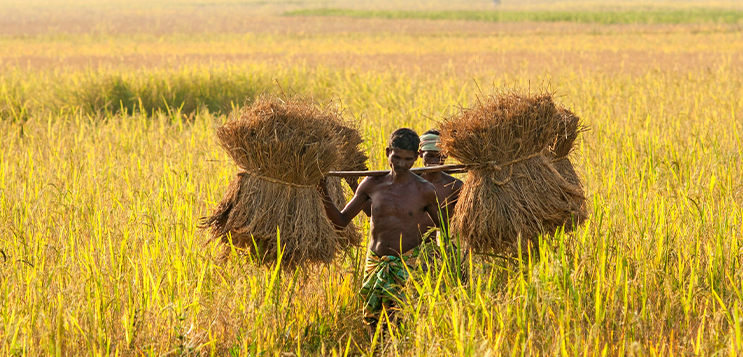
How many times have we found ourselves wondering what truly constitutes sustainability? How should the different aspects and metrics of an activity be assessed to decide if it qualifies? As international agendas and national policies sought to integrate sustainability into the system, the same question echoed in boardrooms and industry forums: We don’t know exactly what sustainability means, or how it applies to our sector.
The European Union Taxonomy for Sustainable Activities (EU Taxonomy), the most comprehensive framework under Europe’s much-discussed European Green Deal (EGD), set out to answer that question — and, in doing so, (seemingly) aimed to remove a key roadblock on the path to a sustainable future.
What is EU Taxonomy?
The EU Taxonomy is a detailed classification system that tells companies:
- What activities cause environmental harm
- What changes are needed to reduce that harm
- How they must report their sustainability practices
- What happens if they fail to comply?
The rules begin with one big requirement: companies must substantially contribute to at least one of six environmental objectives:
- Climate change mitigation
- Climate change adaptation
- Sustainable use and protection of water and marine resources
- Transition to a circular economy
- Pollution prevention and control
- Protection and restoration of biodiversity and ecosystems
While doing this, companies must also Do No Significant Harm (DNSH) to the other five objectives. They must also meet minimum social safeguards.
Does the Comprehensiveness of the EU Taxonomy Pose Challenges for Compliance?
The DNSH principle is exhaustive, considering every possible offset to the environment. For example:
- A company planting trees to offset emissions must ensure the species is native, suited to local soil and climate, and not harmful to other plants or animals.
- Coffee farmers in India must treat the toxic wastewater from washing and pulping before disposing of it, rather than dumping it into unlined pits or rivers — a practice still common in Karnataka and Kerala.
- Pesticides like Imidacloprid, used in tobacco farming, will be prohibited as they kill birds.
In its third pillar of social safeguards, the Taxonomy requires that practices across the entire supply chain meet minimum standards and ensure things as basic as fair and equal pay, safe working conditions, and protective gear for hazardous tasks. Yet even these “simple” requirements pose steep challenges for Indian plantations, where such safeguards are far from the norm.
Approximately 80% of farmers in India are small and marginal, and thus have limited access to protective gear and safe working conditions. It’s hardly surprising, then, that roughly 44% of farmers suffer from pesticide poisoning in India. Moreover, many tea and tobacco workers face musculoskeletal injuries, nicotine poisoning, and other serious health issues due to unsafe working conditions.
However, to companies, the taxonomy appeared as a maze of requirements. They pushed back, and the rules were changed.
Whom Does the EGD Edit, Omnibus Help?
With the introduction of the Omnibus regulation (an edited version of the EGD), the Corporate Sustainability Due Diligence Directive (CSDDD), which was introduced to enforce compliance, has now been significantly edited — most notably by reducing the scope of companies required to report on their activities.
However, another significant change is that 70% fewer data points are now required, meaning companies must provide less information in their reports. Even so, the list of activities that could be reported on under the EU Taxonomy remains the same. And there’s another twist: activities representing less than 10% of turnover, capital expenditure (capex), or operational expenditure (opex) can now be excluded from disclosure altogether.
All of this aids the purpose of companies that cried foul, saying that the required reporting on the extensive list of activities was too burdensome. And while, on paper, the Omnibus has eased the reporting burden (in terms of quantity), the sustainability standards and the exhaustive list remain, albeit in a smaller proportion.
Large European companies, such as Nestlé, Lavazza, and Camellia, will still demand that their suppliers, predominantly Indian farmers, meet these criteria for cotton, tobacco, tea, coffee, and spice producers.
However, most Indian farmers are far from ready for this transition, as they lack access to protective equipment, sustainable inputs, training, or the financing to implement change, and most importantly, information about the changes happening in the market and their impact on them.
Who Will Help Those at the End of the Supply Chain Comply?
The government may try, but its schemes alone cannot bridge this gap. Large companies must step in — they are the ones who know exactly what compliance they will require from their suppliers.
The idea is far from impossible. Because some, like Philip Morris International, are already showing a way, as Philip Morris International guides and assists Indian farmers in building farm ponds for irrigation, helping counter erratic rainfall for tobacco cultivation. Because, if not, these companies (with their extensive set of resources, capital, and a seat at the policy table), are we really expecting farmers and small suppliers across developing nations to pick up the new (and ever-revising) rulebook and adjust according to it by themselves?
While businesses may initially think that this would be a waste of investment, reports suggest otherwise. A DNV study found that 40% of businesses reported revenue growth from investments in supply chain sustainability, and 34% saw cost savings. Additionally, investors and buyers have started leaning more towards investing in transparently sustainable companies; even EGD promotes this type of investment under CBAM. So, would it be really that difficult for organisations to arrange for training and awareness programmes for their farming produce suppliers? Or maybe, the EU could introduce a section mandating that this support be extended from corporations towards farmers, while they’re still editing the document.
Without large-scale, coordinated support from the companies making significant profits from the products and the government that counts revenues, millions of smallholders and farmers could be locked out of lucrative EU markets.
